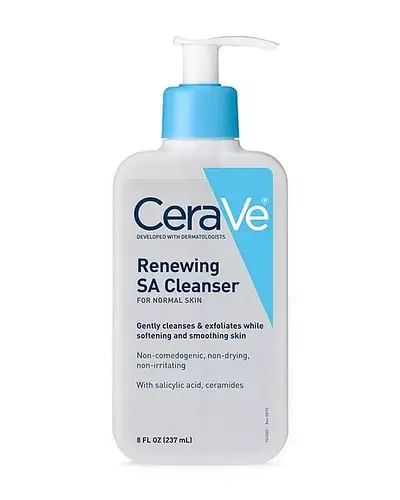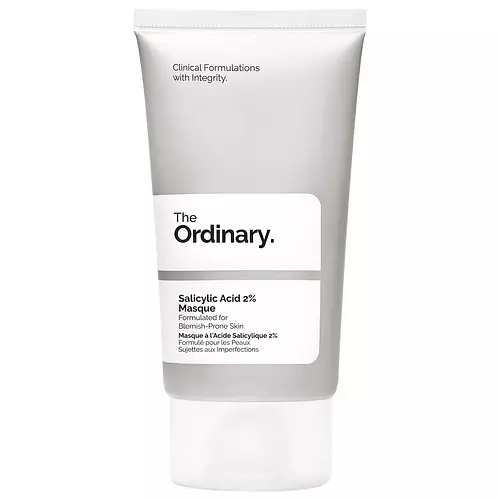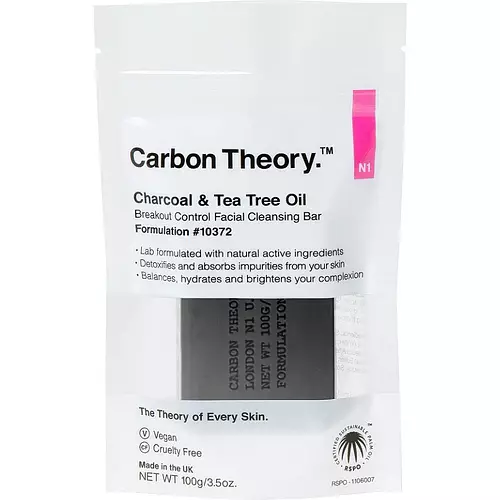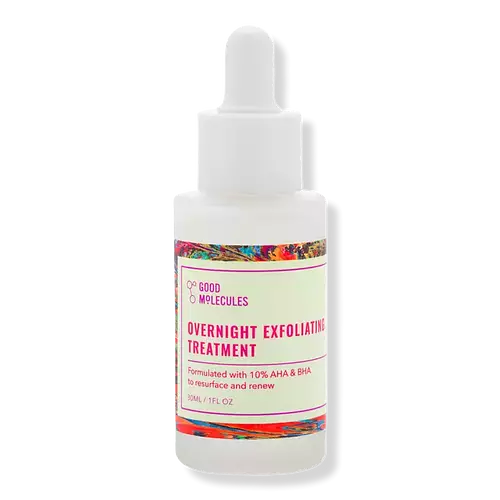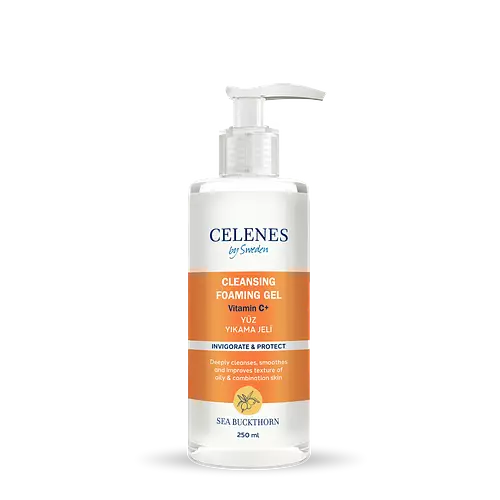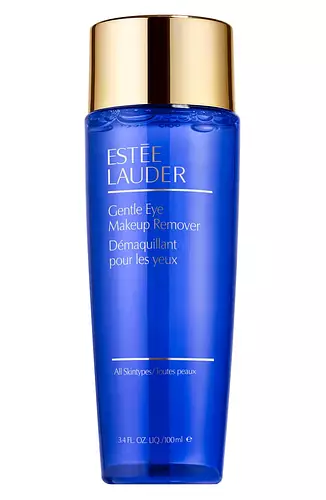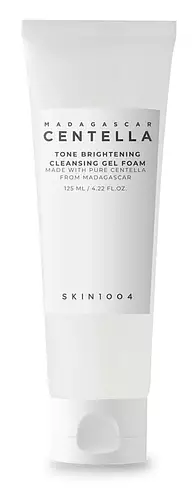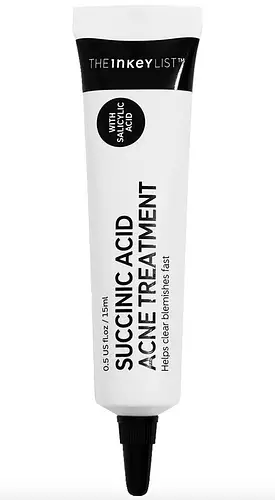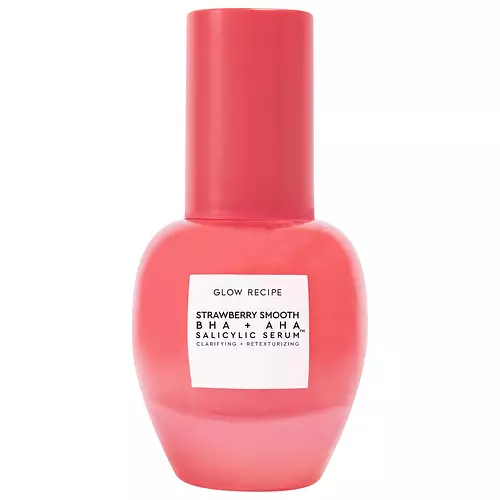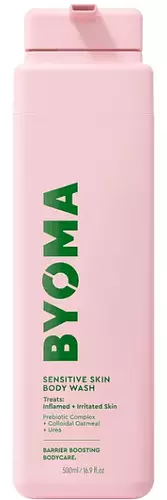Updated on August 04, 2023
Overview
What they are
These products are both reef safe . They have a total of 5 ingredients in common
Cool Features
They both contain BHA
Suited For
They're both likely to be good for fighting acne, dry skin, brightening skin, oily skin, reducing pores and scar healing
Free From
They both do not contain any harsh alcohols, common allergens, parabens, silicones or sulfates
What's Inside
They both contain fragrances
We independently verify ingredients, and our claims are backed by peer-reviewed research. Spot a product that needs an update? Let us know.
Ingredient Info
CeraVe Renewing SA Cleanser 27 ingredients
The Ordinary Salicylic Acid 2% Masque 19 ingredients
At a glance
Click on any of the items below to learn more
CeraVe Renewing SA Cleanser 27 ingredients
The Ordinary Salicylic Acid 2% Masque 19 ingredients
Notable Ingredients
This product contains 1 ingredient that may have this attribute:
This product contains 1 ingredient that may have this attribute:
This product contains 1 ingredient that may have this attribute:
This product contains 3 ingredients that may have this attribute:
This product contains 1 ingredient that may have this attribute:
Benefits
This product contains 5 ingredients that may have this attribute:
This product contains 2 ingredients that may have this attribute:
This product contains 5 ingredients that may have this attribute:
This product contains 3 ingredients that may have this attribute:
This product contains 1 ingredient that may have this attribute:
This product contains 2 ingredients that may have this attribute:
This product contains 4 ingredients that may have this attribute:
This product contains 1 ingredient that may have this attribute:
This product contains 1 ingredient that may have this attribute:
This product contains 2 ingredients that may have this attribute:
This product contains 3 ingredients that may have this attribute:
Concerns
This product contains 2 ingredients that may have this attribute:
This product contains 1 ingredient that may have this attribute:
This product contains 1 ingredient that may have this attribute:
This product contains 2 ingredients that may have this attribute:
This product contains 1 ingredient that may have this attribute:
Notable Ingredients
This product contains 1 ingredient that may have this attribute:
This product contains 1 ingredient that may have this attribute:
This product contains 2 ingredients that may have this attribute:
Benefits
This product contains 2 ingredients that may have this attribute:
This product contains 1 ingredient that may have this attribute:
This product contains 1 ingredient that may have this attribute:
This product contains 2 ingredients that may have this attribute:
This product contains 3 ingredients that may have this attribute:
Concerns
This product contains 1 ingredient that may have this attribute:
This product contains 1 ingredient that may have this attribute:
This product contains 2 ingredients that may have this attribute:
This product contains 1 ingredient that may have this attribute:
Ingredients Side-by-side
Ingredients Explained
These ingredients are found in both products.
Ingredients higher up in an ingredient list are typically present in a larger amount.
Water. It's the most common cosmetic ingredient of all. You'll usually see it at the top of ingredient lists, meaning that it makes up the largest part of the product.
So why is it so popular? Water most often acts as a solvent - this means that it helps dissolve other ingredients into the formulation.
You'll also recognize water as that liquid we all need to stay alive. Talk about multi-purpose! If you see this, drink a glass of water. Stay hydrated!
Learn more about WaterGlycerin is already naturally found in your skin. It helps moisturize and protect your skin.
A study from 2016 found glycerin to be more effective as a humectant than AHAs and hyaluronic acid.
As a humectant, it helps the skin stay hydrated by pulling moisture to your skin. The low molecular weight of glycerin allows it to pull moisture into the deeper layers of your skin.
Hydrated skin improves your skin barrier; Your skin barrier helps protect against irritants and bacteria.
Glycerin has also been found to have antimicrobial and antiviral properties. Due to these properties, glycerin is often used in wound and burn treatments.
In cosmetics, glycerin is usually derived from plants such as soybean or palm. However, it can also be sourced from animals, such as tallow or animal fat.
This ingredient is organic, colorless, odorless, and non-toxic.
Glycerin is the name for this ingredient in American English. British English uses Glycerol/Glycerine.
Learn more about GlycerinSalicylic Acid (also known as beta hydroxy acid or BHA) is one of the most well-known ingredients for treating skin that struggles with blackheads and acne. It helps to exfoliate both the skin's surface and pores, and also acts as an anti-inflammatory agent.
This multitasking property makes it a great ingredient for cleaning out pores, controlling oil production, and reducing inflammation.
Unlike AHAs which are water soluble, Salicylic Acid is oil soluble. This means that it's able to exfoliate the inside of pores and reduce blackheads.
Concentrations of 0.5-2% are recognized by the U.S. FDA as an over-the-counter topical acne product.
It can cause irritation and/or dryness if one's skin already has a compromised moisture barrier, so it's best to focus on repairing that before introducing a Salicylic Acid into your routine.
In general, Salicylic Acid is a great ingredient for oily acne-prone skin.
While salicylic acid does not increase sun-sensitivity, we still recommend wearing SPF.
If you are looking for the ingredient called BHA or Butylated Hydroxyanisole, click here.
Learn more about Salicylic AcidPhenoxyethanol is a preservative that has germicide, antimicrobial, and aromatic properties. Studies show that phenoxyethanol can prevent germ and microbial growth. By itself, it has a scent that is similar to that of a rose.
It's often used in formulations along with Caprylyl Glycol to preserve the shelf life of products.
Xanthan gum is used as a stabilizer and thickener within cosmetic products. It helps give products a sticky, thick feeling - preventing them from being too runny.
On the technical side of things, xanthan gum is a polysaccharide - a combination consisting of multiple sugar molecules bonded together.
Xanthan gum is a pretty common and great ingredient. It is a natural, non-toxic, non-irritating ingredient that is also commonly used in food products.
Learn more about Xanthan GumIngredient Ratings
Here's what our community thinks of the ingredients in these two products.
When to use
CeraVe Renewing SA Cleanser 27 ingredients
The Ordinary Salicylic Acid 2% Masque 19 ingredients


Reviews
Here's what our community thinks
CeraVe Renewing SA Cleanser 27 ingredients
AshN.
(Using Since 2020) Similar to the other CeraVe cleanser it hasn't let me down. I took off one star just because I feel that this isn't really ideal...
(Using Since 2020) Similar to the other CeraVe cleanser it hasn't let me down. I took off one star just because I feel that this isn't really ideal for every day use, especially if you have dry, sensitive skin (despite it being advertised as gentle). It's fairly stripping due to all the actives in it, so I found it to be a bit irritating to me. But once I stopped using it everyday and switched to only using it every other evening, the irritation stopped all together and actually helped with my occasional comedonal acne.
CarlaTriegaardt
Think twice befor using on dry/combination skin
I was super excited to start using this product because of all of the benefits but found it to be...
Think twice befor using on dry/combination skin
I was super excited to start using this product because of all of the benefits but found it to be slightly drying and irritating to my skin.
The Ordinary Salicylic Acid 2% Masque 19 ingredients
antimonious
The only mask good for my skin
DISCLAIMER: Every skin is different, explore products carefully, mindfully, and have fun :) | (Skin profile:...
The only mask good for my skin
DISCLAIMER: Every skin is different, explore products carefully, mindfully, and have fun :) | (Skin profile: combination, slightly sensitive, textured, oily T-zone, enlarged pores) | For years I've struggled with top-layer exfoliation because any product I'd use would leave my skin red, irritated, and looking like tight plastic foil. I tried dozens of wet masks, sheet masks, acid peels, with a variety of acids (salicylic, glycolic, you name it - I've tried it), and none worked well. This wet mask is a game-changer. Twice a week, I apply it in the evening, after cleansing, a generous amount I'd say, but not too much, "about half a teaspoon is enough for the face and neck" the packaging says. Usually I leave it on for 7-8 minutes, a bit less than the 10 minutes the packaging puts as the maximum, gently rinse it off with warm water, pat my face dry with a soft towel, and my skin looks just fine. I haven't ever had any redness after using it, my skin wasn't feeling tight, and it even still had a natural glow to it (which hasn't ever happened because other masks would dry my skin out completely). This product deserves way more than just 5 stars.
